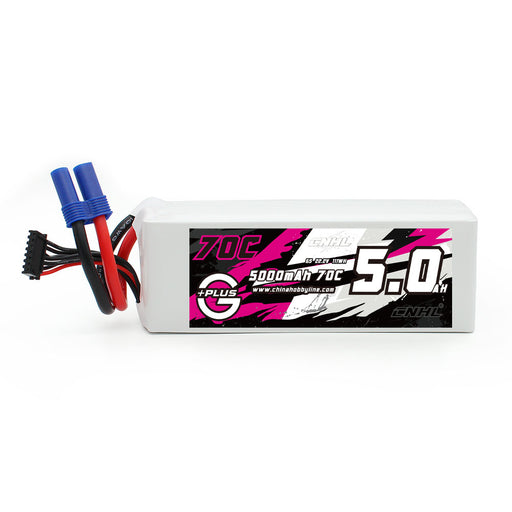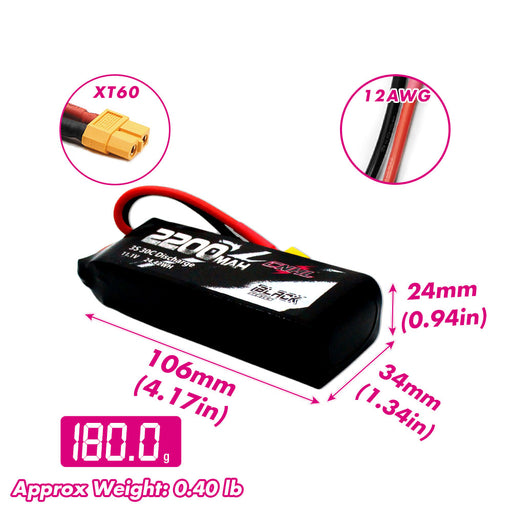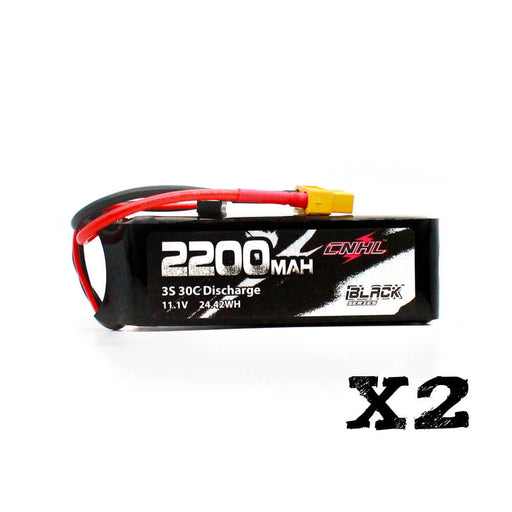
リポバッテリーを完全に充電したまま、どのくらいの期間放置しても損傷しませんか?
Hバッテリーを満充電のままどれくらい放置できますか?
おそらく、バッテリーをセルあたり4.2ボルトの満充電状態で放置するのはバッテリーに良くないことはご存知でしょう。しかし、飛行の前日にバッテリーを充電して、その翌日に何らかの理由で雨が降って飛行に行けなかった場合はどうでしょうか。すぐにバッテリーを保管状態に戻すべきでしょうか、それとも1日か2日待って翌日に飛行しても大丈夫でしょうか。実はこれには明確な正解はなく、程度の問題に過ぎません。では、まず私たちが知っていることから始めましょう。このトピックに関する確かな情報は実際にはかなり入手困難ですが、典型的なリポバッテリーの場合、保管電圧であるセルあたり3.8ボルトで放置すると、基本的に永遠にその状態を保ち、製造された日とほぼ同じ性能を維持できることがわかっています。これは、リポが製造されるとき、倉庫や小売店で3.8ボルトの状態で保管されているためで、購入時も新品のままだからです。
では、どれくらいの期間放置するとダメージを受けるのでしょうか。その質問に対する実際の答えは、lipobench.deというウェブサイトが行ったテストに戻ります。彼らがまだテストを続けているかはわかりませんが、数年前にバッテリーテストを行い、満充電の状態で30日間放置すると性能が5%低下するという結果を出しました。つまり、満充電の状態で30日間で5%の性能低下という経験則があります。しかし、本当の問題は、その30日間が連続して満充電の状態なのか、それともバッテリーの寿命の中で30回に分けて1日ずつ満充電の状態なのかということです。その仮説を検証するデータは私も知りません。しかし、私の考えでは、満充電の状態で過ごす時間は累積的であり、バッテリー内部で起こる化学反応は充電された時点から始まり、時間とともに進行していきます。ですから、連続して30日間満充電の状態にあることは、非連続で30回24時間満充電の状態にあることとほぼ同じダメージだと思います。私はバッテリーを、寿命の中で満充電の状態にあった総時間として考えています。ですから、バッテリーを保管電圧まで放電するかどうかを考えるときは、そのバッテリーが寿命の間にどれだけの時間満充電の状態にあるのかを自問してください。バッテリーが満充電の状態で過ごせる時間の予算があり、最終的には性能が劣化して使えなくなるか、あるいはバッテリーをぶつけて壊してしまい使えなくなるのです。ほとんどの場合、フリースタイルパイロットやレースパイロットは、満充電のまま放置して劣化させるよりも、バッテリーをぶつけて壊してしまう方がはるかに早くバッテリーを破壊します。もし1か月の休暇に行くなら、バッテリーを満充電のままにはしませんが、「1日か2日で保管電圧に戻すべきか」とはあまり考えず、充電したままにしておいて、飛びに行く準備ができたら飛びます。なぜなら、1日や2日満充電のままにしておく時間は、バッテリーの寿命の中で20日か30日程度であり、それは約5%の性能低下に相当しますが、実際には満充電の累積効果が目に見えるほど影響を与える前に、他の方法でバッテリーを破壊してしまう可能性が高いからです。
もう一つ覚えておくべきことは、バッテリーは放電と充電の際にもダメージを受けるということです。充放電の行為自体がバッテリーを少しずつ消耗させます。だから、リポバッテリーが容量が新品の70%に減るまでに約300サイクルと言われるのはそのためです。もしバッテリーが満充電で、翌日飛ばす予定がなくて保管用に放電させると、それが1サイクルになります。つまり、保管のために充放電することもバッテリーに負担をかけるのです。満充電のままどれくらい放置するか、保管のために放電するかを考えるときはこの点を考慮してください。個人的には数日間は満充電のままにしておき、保管する必要がある場合は最大で1週間程度にしていますが、それ以上になると満充電状態での保管可能な時間の限度に近づき、性能劣化が始まります。バッテリーを壊すのは叩き壊すことであって、満充電のまま放置して壊すのは避けたいです。
まとめると、充電式バッテリーは長期間使用しない場合、約50%の充電状態で保管するのが理想的であり、使い捨てバッテリーは完全に放電するまで使用し、その後廃棄するべきです。バッテリーの保管や充電に関する具体的な推奨事項については、必ずメーカーのガイドラインを参照してください。
スマートフォンやノートパソコンに一般的に使われているリチウムイオン電池などの充電式バッテリーについては、数か月など長期間使用しない場合、約50%の充電状態で保管することが一般的に推奨されます。これにより、過充電や過放電を防ぎ、バッテリーの性能劣化を抑えることができます。充電式バッテリーを保管する場合は、安全な電圧レベルを下回らないように定期的にチェックして充電することが望ましいです。
一方、アルカリ電池などの使い捨てバッテリーは、長期間満充電のまま放置してはいけません。これらのバッテリーは一回限りの使用を想定しており、満充電の状態で保管すると性能が低下します。使い捨てバッテリーをお持ちの場合は、完全に放電するまで使用し、その後適切に廃棄するのが最善です。
まとめると、充電式リポバッテリーの場合、長期間使用しないときは約50%の充電状態で保管するのが理想的です。一方、使い捨てバッテリーは完全に放電するまで使用し、その後適切に廃棄してください。バッテリーの保管や充電に関する具体的な推奨事項については、必ずメーカーのガイドラインを参照してください。

ベストセラー
-
元の価格 $65.99元の価格 $65.99 - 元の価格 $65.99元の価格 $65.99$53.99 USD - $65.99 USD$53.99 - $65.99現在の価格 $53.99 USD
CNHL G+Plus 5000mAh 22.2V 6S リポバッテリー 70C EC5プラグ付き
在庫に10以上あります仕様: ストック番号: 500706EC5 容量: 5000mAh 電圧: 22.2V / 6セル / 6S1P 放電率: 70C 継続 / 140C バースト 充電率: 最大5C サイズ(1-5mmの誤差): 49X51X149mm(高さ*幅*長さ) おおよその重量(±5g) : 71...
詳細をすべて表示元の価格 $65.99元の価格 $65.99 - 元の価格 $65.99元の価格 $65.99$53.99 USD - $65.99 USD$53.99 - $65.99現在の価格 $53.99 USD最大18%節約 -
元の価格 $38.99元の価格 $38.99 - 元の価格 $38.99元の価格 $38.99$34.99 USD - $38.99 USD$34.99 - $38.99現在の価格 $34.99 USD
CNHL スピーディーピザシリーズ プロ 1350mAh 22.2V 6S 150C リポバッテリー XT60プラグ付き
残り10台のみ仕様: 在庫番号: 1351506PZ 容量:1350mAh 電圧:22.2V / 6セル / 6S1P 放電率:連続150C / バースト300C 充電率:最大5C サイズ(1-5mmの差異あり):38X38X78mm おおよその重量(±5g):215g 出力コネクター:XT60 バラン...
詳細をすべて表示元の価格 $38.99元の価格 $38.99 - 元の価格 $38.99元の価格 $38.99$34.99 USD - $38.99 USD$34.99 - $38.99現在の価格 $34.99 USD最大10%節約 -
元の価格 $51.98元の価格 $51.98 - 元の価格 $51.98元の価格 $51.98$46.78 USD - $51.98 USD$46.78 - $51.98現在の価格 $46.78 USD
2パック CNHL ブラックシリーズ V2.0 1300mAh 22.2V 6S 130C リポバッテリー XT60プラグ付き
在庫に10以上あります仕様 在庫番号: 1301306BK 容量: 1300mAh 電圧: 22.2V / 6セル / 6S1P 放電率: 130C 継続 / 260C バースト 充電率: 最大5C サイズ(1-5mmの差異あり): 48X33X77mm 重量(±5g): 210g 出力コネクター: XT60 バ...
詳細をすべて表示元の価格 $51.98元の価格 $51.98 - 元の価格 $51.98元の価格 $51.98$46.78 USD - $51.98 USD$46.78 - $51.98現在の価格 $46.78 USD最大10%節約 -
元の価格 $43.98元の価格 $43.98 - 元の価格 $43.98元の価格 $43.98$31.98 USD - $43.98 USD$31.98 - $43.98現在の価格 $31.98 USD
[Combo] 2パック CNHL MiniStar 1500mAh 14.8V 4S リポバッテリー 120C XT60プラグ付き
在庫に10以上あります仕様: 在庫番号:1501204 容量:1500mAh 電圧:14.8V / 4セル / 4S1P 放電率:連続120C / バースト240C 充電率:最大5C サイズ(1-5mmの差異):37X33X76mm おおよその重量(±5g):169g 出力コネクター:XT60 バランスコネクター...
詳細をすべて表示元の価格 $43.98元の価格 $43.98 - 元の価格 $43.98元の価格 $43.98$31.98 USD - $43.98 USD$31.98 - $43.98現在の価格 $31.98 USD最大27%節約 -
元の価格 $23.98 - 元の価格 $37.98元の価格 $23.98 - 元の価格 $37.98元の価格 $23.98$19.98 USD - $37.98 USD$19.98 - $37.98現在の価格 $19.98 USD
2パック CNHL ブラックシリーズ 2200mAh 3S 11.1V 30C リポバッテリー XT60プラグ付き
在庫に10以上あります仕様: 在庫番号:220303BK 容量:2200mAh 電圧:11.1V / 3セル / 3S1P 放電率:30C連続 / 60Cバースト 充電率:最大5C サイズ(1-5mmの誤差あり):24X34X106mm おおよその重量(±5g):180g 出力コネクター:XT60 バランスコネク...
詳細をすべて表示元の価格 $23.98 - 元の価格 $37.98元の価格 $23.98 - 元の価格 $37.98元の価格 $23.98$19.98 USD - $37.98 USD$19.98 - $37.98現在の価格 $19.98 USD最大17%節約
新しいアイテム
-
元の価格 $225.00 - 元の価格 $225.00元の価格 $225.00$225.00 USD$225.00 - $225.00現在の価格 $225.00 USD
CNHL Havok 1000mm 高速 4S スポーツレーサー RC 飛行機 PNP(高視認性イエロー/レッドエディション)
残り9台のみCNHL Havok 1000mm 4Sスポーツレーサープレーン – 実績ある1m Havok機体をベースに CNHL Havok 1000mm 4SスポーツレーサーRCプレーンPNPは、日常の実用性を犠牲にせずアドレナリンを求めるパイロット向けの1メートルフォームスピードプレーンです。...
詳細をすべて表示元の価格 $225.00 - 元の価格 $225.00元の価格 $225.00$225.00 USD$225.00 - $225.00現在の価格 $225.00 USD -
元の価格 $120.00 - 元の価格 $120.00元の価格 $120.00$120.00 USD$120.00 - $120.00現在の価格 $120.00 USD
MNRC MN300 RTR 1/12スケール 4WD RC ロッククローラー オフロードトラック 2速トランスミッション付き
残り9台のみMNRC MN300は1/12スケールのレディトゥラン(RTR)4WD RCロッククローラーで、軽いクローリング、トレイル走行、日常のオフロードの楽しみのために作られています。電子機器が組み込まれた状態で組み立て済みで、7.4VバッテリーとUSB充電ケーブルが箱に同梱されています。「全か無...
詳細をすべて表示元の価格 $120.00 - 元の価格 $120.00元の価格 $120.00$120.00 USD$120.00 - $120.00現在の価格 $120.00 USD -
元の価格 $119.99 - 元の価格 $119.99元の価格 $119.99$119.99 USD$119.99 - $119.99現在の価格 $119.99 USD
VOLANTEX スピットファイア RC 飛行機 4チャンネル 6軸ジャイロ安定化機能付き すぐに飛ばせる
残り9台のみ第二次世界大戦の伝説的な英国戦闘機に触発されたVOLANTEX スピットファイア RCプレーンは、クラシックな戦闘機の外観と初心者に優しい最新の飛行制御を融合しています。VOLANTEXの実績ある400mmプラットフォームを基に構築され、このすぐに飛ばせるRC飛行機はXPILOT安定化...
詳細をすべて表示元の価格 $119.99 - 元の価格 $119.99元の価格 $119.99$119.99 USD$119.99 - $119.99現在の価格 $119.99 USD -
元の価格 $122.99 - 元の価格 $122.99元の価格 $122.99$122.99 USD$122.99 - $122.99現在の価格 $122.99 USD
VOLANTEX BF109 RC 飛行機 4チャンネル RTF – ジャイロ&XPilot搭載 第二次世界大戦戦闘機
残り9台のみVOLANTEX BF109 4チャンネル RCプレーン RTFは、最も象徴的な第二次世界大戦の戦闘機の一つを、コンパクトで初心者に優しいパッケージにまとめました。400mmの翼幅、軽量なEPPフォーム製の機体、そしてXPilotジャイロシステムを備えたこの戦闘機は、新しいパイロットに滑...
詳細をすべて表示元の価格 $122.99 - 元の価格 $122.99元の価格 $122.99$122.99 USD$122.99 - $122.99現在の価格 $122.99 USD -
元の価格 $117.99 - 元の価格 $117.99元の価格 $117.99$117.99 USD$117.99 - $117.99現在の価格 $117.99 USD
Volantex RC プレーン P51D V2 400mm RTF – 初心者向けXPilotスタビライザー付き4CHウォーバード
残り9台のみVolantex RC Plane P51D V2 RTFは、学習をできるだけリラックスして行えるように設計されたコンパクトな第二次世界大戦スタイルの戦闘機です。400mmの翼幅、EPPフォーム構造、XPilot 6軸スタビライザーを備え、このVolantex RC飛行機は初心者に滑らかな...
詳細をすべて表示元の価格 $117.99 - 元の価格 $117.99元の価格 $117.99$117.99 USD$117.99 - $117.99現在の価格 $117.99 USD





















コメントを残す